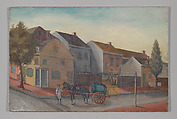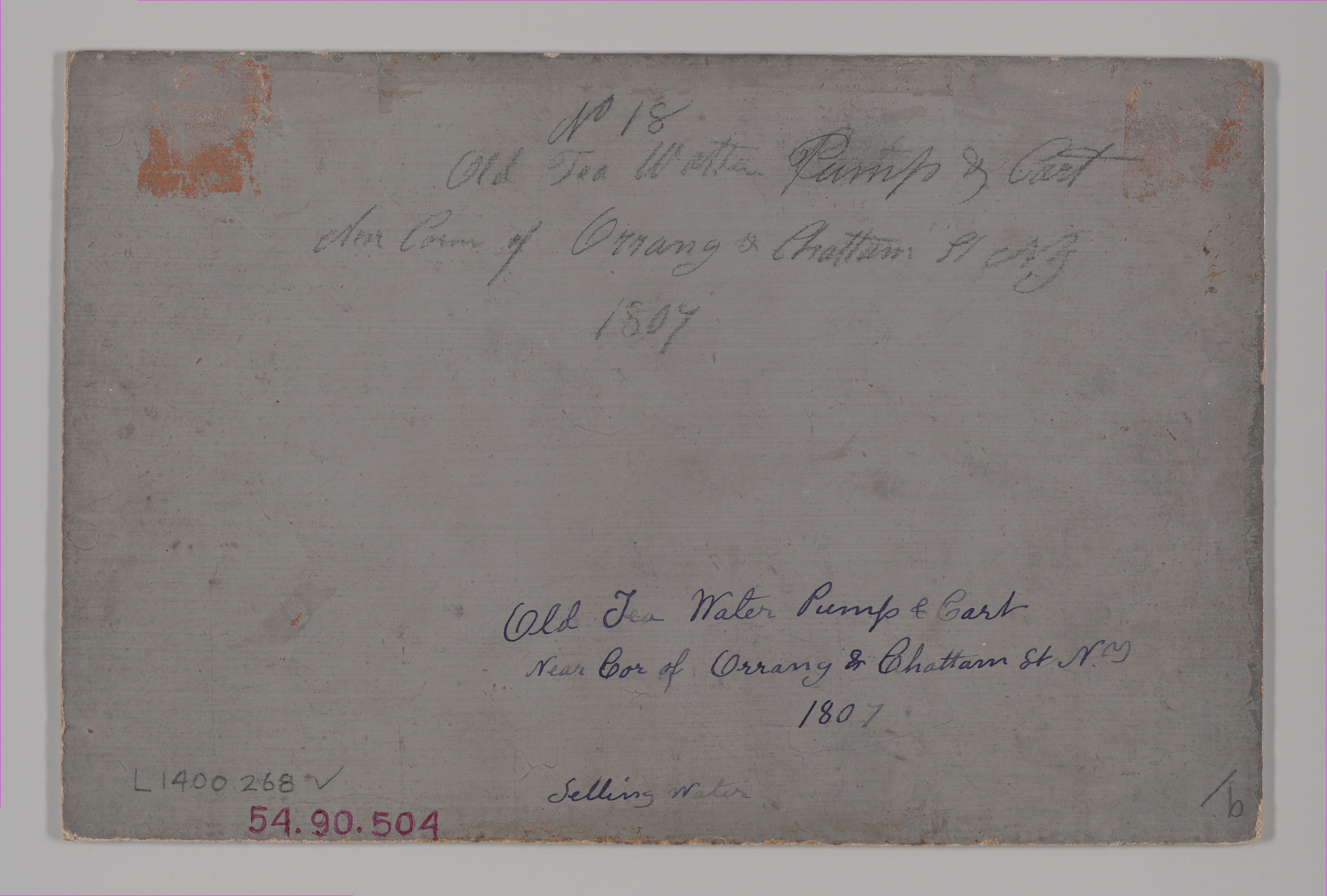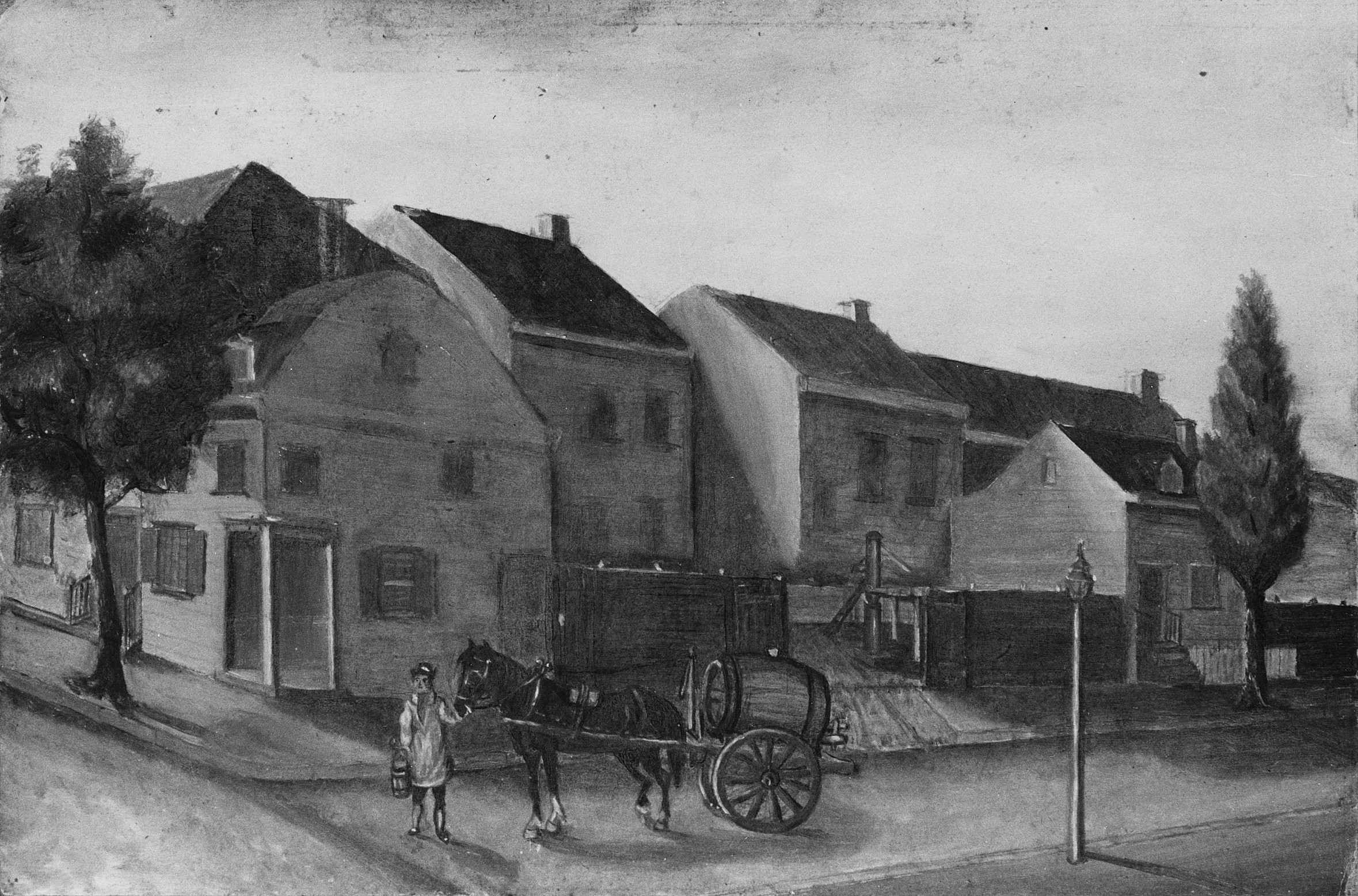Tea water pump
William P. Chappel American
Not on view
Before the completion of the Croton Aqueduct in 1842, fresh water was scarce in Manhattan. Wells often produced brackish water and those that did not eventually became polluted as the city’s population swelled. Such was the fate of the Tea Water Pump at Chatham and Roosevelt, fed by the nearby Fresh Water Pond. By the end of the eighteenth century, the seventy-acre pond in the sixth ward was a noxious mix of dead animals, sewage, and, especially, industrial waste from the local tanneries and potteries. Without other options, poor residents had to buy the tainted city water from local cartmen at a penny per gallon.
Due to rights restrictions, this image cannot be enlarged, viewed at full screen, or downloaded.
This artwork is meant to be viewed from right to left. Scroll left to view more.




